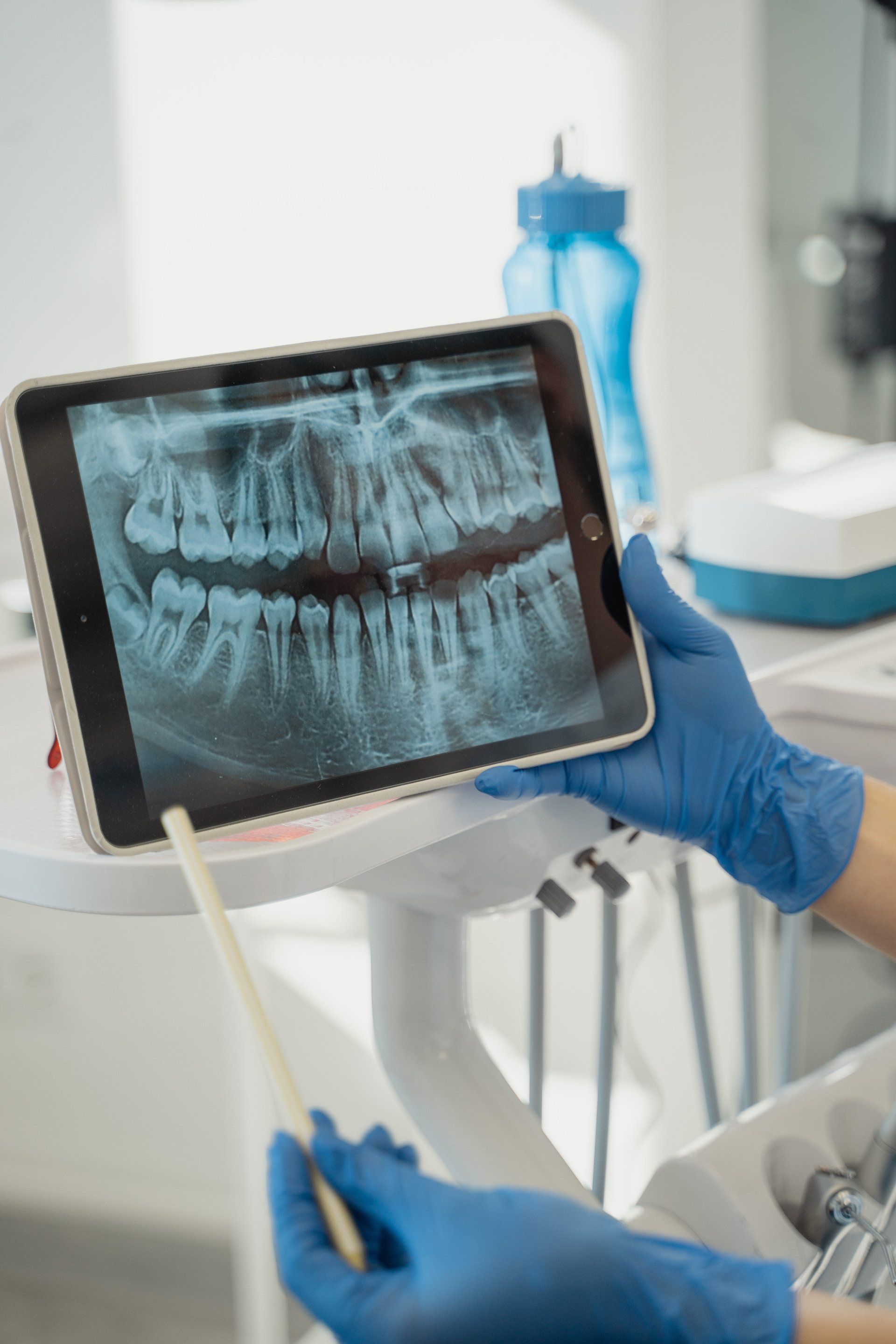Fatty liver and drug metabolism
Veronika Valdova • November 12, 2019
Non-alcoholic fatty liver disease: the silent killer.
The incidence of non-alcoholic fatty liver disease (NAFLD) is rising. It is a common and often under-appreciated comorbidity in patients with obesity, insulin resistance, diabetes, metabolic syndrome, and cardiovascular disease. These patients are likely to be on multiple medications for prolonged periods. Drug uptake, distribution, metabolism, transport, and excretion change over time in patients with fatty liver.
The progression of NAFLD to NASH leads to changes in excretion and toxicity of drugs that are typically well-tolerated.
Liver biopsy remains the gold standard for the accurate diagnosis and definition of staging and grading relating to chronic liver disease. Liver biopsy provides information on the degree of fibrosis, inflammation, necrosis, and steatosis, and quantifies the amount of iron and copper in the parenchyma. Various grading systems are then used to evaluate the degree and stage of the disease and choose an appropriate management regime (Caviglia et al., 2014). The accurate assessment of chronic liver disease and its progression into fibrosis, cirrhosis, and hepatocellular carcinoma has been a continuing challenge. Non-invasive biomarkers in accessible fluids that correlate with type and extent of liver tissue damage and prognosis are of great interest to clinicians.
Insulin resistance and metabolic syndrome
Non-alcoholic fatty liver disease (NAFLD) and non-alcoholic steatohepatitis (NASH) are referred to as fatty liver. Fatty liver is strongly associated with insulin resistance, diabetes mellitus, dyslipidemia, and hypertension, summarily known as metabolic syndrome. Adiponectines adiponectin, leptin, resistin, and visfatin are the most relevant indicators of metabolic syndrome. Hepatocellular apoptosis is one of the typical features of NASH. The laboratory clues include the increase in the messenger RNA expression of the adiponectin receptor (ApoR2). Inverse correlation between adiponectin and bile acids exists in NASH.
Proteohormone leptin that regulates food intake and energy expenditure reflects the total amount of body fat and is one of the indicators of insulin resistance. Ghrelin, a peptide produced by the stomach, influences insulin secretion and glucose and lipid metabolism. Ghrelin and retinol-binding protein 4 (RBP4) can also serve as indicators of insulin resistance. As such, adiponectines are useful biomarkers of metabolic syndrome, NAFLD, and its progression to NASH (Neuman, Cohen and Nanau, 2014).
Diagnosis of fatty liver (NAFLD and NASH)
Non-invasive tests and imaging have an increasing role in the diagnosis of NAFLD/NASH. BAAT score considers body mass index (BMI), age at liver biopsy, ALT, and serum triglycerides. It is used to identify patients who would most benefit from liver biopsy (Neuman et al., 2016).
Clinical parameters standardly evaluated in NAFLD/NASH patients include body mass index or waist circumference. Biochemical parameters include transaminase levels, gamma-glutamyl transferase, cholesterol, triglycerides, glucose, and C-peptide. Diagnostic indicators of insulin resistance in NASH are cytokines tumor necrosis factor (TNF) α and interleukin (IL)-6, CC-chemokine ligand-2 (chemo-attractant protein-1) and C-reactive protein (hs-CRP).
Complementary information can be gained from markers of cell death and mitochondrial dysfunction. These biomarkers include apolipoprotein A1 and B, leptin, adiponectin, free fatty acids, ghrelin, and cytokeratins. Initial stages of the disease only show minimum elevations in transaminases, ALP, and GGT. These biomarkers have to be evaluated in the context of other risk factors (Neuman, Cohen and Nanau, 2014).
Alcoholic liver disease (ALD)
Alcohol is one of the significant sources of oxidative stress. Alcoholic liver disease (ALD) develops as the consequence of oxidative stress associated with alcohol metabolism, glutathione depletion, abnormal metabolism of methionine, malnutrition, the release of intestinal endotoxins, and subsequent activation of Kupffer cells. Progression to the fatty liver through lipoperoxidation affects more than 90% of heavy drinkers. In about 30%, the disease progresses to fibrosis and cirrhosis (Gao and Bataller, 2011). Oxidative stress, one of the NAFLD risk factors, is detected by elevated plasma reactive carbonyl species levels and is assessed based on the balance of SOD2 antioxidant enzyme and cytochrome from the p450 family CYP2E1.
Free fatty acids are lipotoxic. The biological mechanism involved is the downregulation of mitochondrial beta-oxidation. Consequently, the accumulation of ceramides and diacylglycerol occurs (Neuman, Cohen and Nanau, 2014).
Liver biopsy and venous pressure gradient (HVPG) are the best measurements of disease severity. It also sheds light on the risk of complications such as bleeding, infections, ascites, encephalopathy and hepatocellular carcinoma. Additional options include transient elastography (Fibroscan), real-time shear wave elastography and MR elastography that can assess the whole liver and avoid sampling error (Karsdal et al., 2014).
Diagnostic performance of biomarkers
The most commonly used indirect serum markers are platelet count, coagulation factors, and transaminases. Direct markers reflect matrix turnover and include products of matrix synthesis or degradation. The most relevant markers include TNF-β, collagens (procollagen I C terminal, procollagen Ⅲ N terminal, procollagen Ⅳ C peptide and N peptide and collagen Ⅳ), tenascin, undulin, matrix metalloproteinases, urinary desmosine and hydroxylysypyridinoline (Chrostek, 2014).
The diagnostic performance of indirect non-invasive markers of liver fibrosis is evaluated by calculating the area under the receiver operating characteristic curve (AUROC). The plot shows the sensitivity and specificity of the tests (Schiavon, 2014). Commercially available plots include FibroTest (median AUROC in ALD 0.83), FibrometerA (0.83), Hepascore (0.83), Forns (0.38), APRI (0.59), FIB-4 (0.70), hyaluronic acid (0.79) and the algorithm combining PI, α-2 macroglobulin and hyaluronic acid (0.96). FibroTest, FibrometerA, and Hepascore showed the highest diagnostic accuracy, with prognostic values comparable to biopsy (Chrostek, 2014).
Chronic viral hepatitis
Hepatitis B (HBV)
The choice of antiviral therapy depends on stage and grade of the disease depending on serum ALT, HBV DNA, hepatitis B e antigen (HBeAg) status, and the level of hepatic necro-inflammation and fibrosis. Novel approaches include a variety of imaging techniques such as transient elastography, ultrasonography, computed tomography, and magnetic resonance imaging. No single marker can accurately measure fibrosis in HBV patients. Practitioners use a wide range of algorithms and combinations. The most relevant markers, according to Zeng et al., are platelet count, AST, and ALT, globin, serum HBsAg, ceruloplasmin, red blood cell distribution width, IL-2R, TGF-α and serum Golgi protein 73 (Zeng et al., 2016). Serum biomarkers used in HBV include haptoglobin, α-2 macroglobulin, apolipoprotein A1, GGT, total bilirubin, gamma globulin, AST, ALT, platelets, cholesterol, INR, albumin and bilirubin. Batteries of these tests are available commercially as Fibrotest, APRI, FIB-4, Forn’s, GUCI and Hui’s. Some of the diagnostic algorithms were developed as a measure of response to treatment (Branchi, 2014).
Hepatitis C (HCV)
Indirect serum biomarkers of liver fibrosis include routine liver function tests such as AST, ALT, GGT, platelet count, bilirubin, haptoglobin, apolipoprotein A1, and α-2 macroglobulin. The most common models for fibrosis estimation in hepatitis C are the AST/ALT ratio, AST-to-Platelet Ratio Index – APRI (median AUROC in HCV 0.77) and FIB-4 (0.74), Forns index (0.76) and Fibroindex (0.76) (Schiavon, 2014).
Fibrosis
Chronic liver diseases such as the progressive form of hepatitis C, NASH, autoimmune hepatitis, and primary biliary cirrhosis represent a significant risk of liver fibrosis. Non-invasive markers of NAFLD-induced fibrosis that correlate with high-risk of liver complications and death include NAFLD fibrosis score, AST/platelet ratio index, FIB-4 score, and BARD score. These markers are valuable when ruling out fibrosis in patients who would not benefit from liver biopsy (Neuman, Cohen, and Nanau, 2014). The NAFLD Fibrosis Score is designed to rule out advanced fibrosis based on age, hyperglycemia, BMI, platelet count, albumin, and AST/ALT ratio. Commercially available algorithms designed for staging and grading of the disease include Fib-4, FibroTest, NashTest, and SteatoTest (Neuman et al., 2016). Non-invasive direct biomarkers of liver fibrinogenesis indicate deposition or removal of extracellular matrix in the liver, while indirect markers reflect changes in processes induced by fibrosis. Direct markers include glycoproteins hyaluronic acid and laminin, collagens (type IV, type III and N-terminal peptide), matrix metalloproteinases, and cytokines TNF α and TGF β, in addition to standard liver function tests such as platelet count, alanine transaminases (ALT and AST), and AST-to-platelets ratio (APRI).
More sophisticated tests include Fibrotest (Bio-predictive), Forn’s index, and Hepascore (PathWest), in addition to imaging methods such as ultrasound-based elastography (Caviglia et al., 2014).
Stiffness is another indicator of liver fibrosis; however, obesity often prevents proper interpretation of the results. The use of transient elastography (FibroScan) XL probe, acoustic radiation force impulse (ARFI), proton magnetic resonance imaging (MRI), two-dimensional magnetic resonance elastography (2D MRI), and novel 3D MRI can further assist grading and staging of liver fibrosis (Neuman et al., 2016).
Metabolomics and proteomics in NAFLD/NASH
Additional markers can be identified using metabolomics and proteomics techniques. Metabolomics analysis shows an association of NAFLD with elevated glycocholate, taurocholate and glyco-cheno-deoxycholate as well as homocysteine and total cysteine and lower plasma glutathione. In NASH and steatosis, plasma levels of long-chain fatty acids and cysteine-glutathione were lower while the levels of several glutamyl dipeptides, free carnitine, butyrylcarnitine and methylbutyrylcarnitine were increased. Proteomic analysis shows that metabolic profile correlates with level of obesity. Proteins upregulated in NAFLD include afamin, apolipoprotein E, CD5 molecule-like, complement C3, insulin-like growth factorbinding protein 3, vitamin D-binding protein and lymphocyte cytosolic protein. Proteins upregulated in NASH are apolipoprotein E, catalase, CD5 molecule-like, lymphocyte cytosolic protein 1 and vitamin D-binding protein. Additional variants of metabolic and proteomic profile can be found in different ethnic groups (Neuman, Cohen and Nanau, 2014).
Inflammatory markers
Cytokines imbalance lead to liver injury through lipotoxicity and signaling processes. Lipopolysaccharides absorbed from the gut is transferred from the portal vein to the liver depends on gut microbiota. Inflammatory markers present in NAFLD/NASH include TNF-α, interleukin (IL)-6 and IL-8, matrix metalloproteinases and high-sensitivity C-reactive protein (hsCRP). Elevated levels of hyaluronic acid indicate advanced fibrosis and steatosis (Neuman et al., 2016).
Cell death markers
The most relevant markers of apoptosis are cytokeratin (CK)-18. The protein’s fragments can be detected in peripheral blood by immunoassay. The M30 assay, M65 and M65ED detect total cell death with varying range of sensitivity and specificity. Fibrosis patterns can be evaluated by immunostaining technique CK-7 that serves as an indicator of the number of hepatic progenitor cells and ductular reaction. Significantly higher caspase activity can be observed in patients with NASH (Neuman, Cohen and Nanau, 2014). Review of 15 studies in NASH patients shows that CK-18 fragments including M30 and M65 can be used to distinguish NASH from simple steatosis and assess disease progression. The levels of a liver-secret-hormone FGF-21 are significantly higher in patients with NAFLD, suggesting its potential value in the diagnosis of NAFLD/NASH. More data is needed to establish reference points and cut of values. These markers are not yet widely used in clinical practice due to technical and accuracy issues (He et al., 2017)
Cirrhosis
Patients with ALD or other chronic liver conditions often present only in final stages when they experience symptoms of bleeding and ascites. Identification of those at risk of fast progression can prevent and treat complications. Remodeling processes in cirrhotic liver lead to a release of a wide range of intracellular and extracellular proteins in the bloodstream. Neo-epitope based markers represent a unique fingerprint of this process and reflect the turnover of fibrotic tissue. Degradation products of type I collagen are used as indicators of bone resorption, multiple myeloma, and liver fibrosis. The diagnostic marker for liver fibrosis is PIIINP, a pro-peptide of type III collagen, which is cleaved off the pro-collagen during formation of mature collagen. PIIINP can be detected using monoclonal antibodies embedded into ELISA. A fragment of type III collagen (C3M) is a biomarker of inflammation-induced soft tissue turnover. Protein fingerprints have to be carefully interpreted in clinical context of full clinical picture (Karsdal et al., 2014).
Hepatocellular carcinoma (HCC)
High-risk factors for the development of HCC is chronic liver disease caused by HCV and HBV infection, chronic alcohol abuse, NAFLD/NASH, and progression to fibrosis, cirrhosis and eventually cancer. HCC tops the list of cancer-related mortality due to late diagnosis and limited treatment options for advanced stages of the disease. The most widely used biomarker for HCC is alphafetoprotein (AFP) that lacks the necessary sensitivity and specificity. Currently, advanced radiological surveillance methods are recommended for patients with chronic liver disease to detect HCC at time when tumor resection, ablation, transarterial chemoembolization and liver transplant are still possible (Kimhofer et al., 2015).
HCC biomarkers
Emerging biomarkers for HCC include the identification of proteins, peptides and metabolites in accessible bodily fluids, notably des-carboxy prothrombin, squamous cell carcinoma antigen–immunoglobulin M complexes, and chromogranin A. Bile acids (glycochenodeoxycholic acid, glycocholic acid, CA, and deoxycholic acid) are extensively studied as indicators of hepatic decompensation and a major source of oxidative stress.
Lysophosphatidylcholines (C16:0, LPC C18:0, and LPC C18:2) decrease in patients with HCC compared to cirrhosis. Metabolic changes affect also the synthesis and degradation of aminoacids, observable as a drop in branched chain aminoacids (leucine, isoleucine, and valine) and the increase in aromatic amino acids (tyrosine, phenylalanine, tryptophan and histidine). Creatinine and trimethylamine-N-oxide (TMAO) also drop in HCC patients. The best model appears to be scanning of the whole serum protein fraction using LC-MS (100% sensitivity and 100% specificity) and its reduced version based on scanning canavaninosuccinate and AFP (96.4% and 100%). Other promising biomarkers are propionylcarnitine and betaine, haptoglobin and fucosylated haemopexin. The full clinical picture has to be considered because biochemical markers of a minor tumor on extensively cirrhotic liver differ substantially from a large tumor on the background of mild cirrhosis (Kimhofer et al., 2015).
Validation of biomarkers
There is an increasing need for classification of biomarkers to facilitate their use and interpretation. Non-invasive markers of fibrosis are validated against the gold standard tool, which is a liver biopsy. However, equivocal results can be expected in about a third of biopsy specimens. (Duarte-Rojo, Altamirano and Feld, 2012). The osteoarthritis (OA) Biomarkers Network, funded by the US National Institutes of Health (NIH), proposed the BIPED approach to classification of biomarkers. The classification takes into account burden of disease, and investigative, prognostic and diagnostic attributes in addition to the efficacy of the intervention. Similarly, in liver fibrosis, an imprecise gold standard makes the validation of non-invasive markers challenging (Karsdal et al., 2014). Non-invasive biomarkers may, in fact, better reflect the true progression of the disease than a liver biopsy and must be assessed in longitudinal studies for predictive value in clinical outcomes (Duarte-Rojo, Altamirano and Feld, 2012).
Conclusion
Many critical gaps still exist for the evaluation of chronic liver disease and its progression. Non-invasive biomarkers are being developed to detect progression of liver damage, select appropriate treatment strategies, and measure response to treatment. Biomarkers also help avoid liver biopsy in patients in whom advanced stages of the liver disease can be excluded and who would not benefit from the additional information provided by the procedure. A reference library of normal values of various tests in different population subgroups, including ethnic groups and patients with comorbidities, needs to be developed to make these new tests useful in clinical practice. Validation of biomarkers remains a major challenge, making their utilization in establishing safety profiles of medications in patients with NAFLD/NASH especially challenging.
References
Caviglia, G., Touscoz, G., Smedile, A. and Pellicano, R. (2014). Noninvasive assessment of liver fibrosis: key messages for clinicians. Polish Archives of Internal Medicine, 124(6), pp.329-335.
Neuman, M., Cohen, L. and Nanau, R. (2014). Biomarkers in nonalcoholic fatty liver disease. Can J Gastroenterol Hepatol, [online] 28(11), pp.607-18.
Neuman, M., Voiculescu, M., Nanau, R., Maor, Y., Melzer, E., Cohen, L., Opris, M. and Malnick, S. (2016). Non-Alcoholic Steatohepatitis: Clinical and Translational Research. Journal of Pharmacy & Pharmaceutical Sciences, [online] 19(1), p.8.
Gao, B. and Bataller, R. (2011). Alcoholic Liver Disease: Pathogenesis and New Therapeutic Targets. Gastroenterology, 141(5), pp.1572-1585.
Karsdal, M., Krarup, H., Sand, J., Christensen, P., Gerstoft, J., Leeming, D., Weis, N., Schaffalitzky de Muckadell, O. and Krag, A. (2014). Review article: the efficacy of biomarkers in chronic fibroproliferative diseases - early diagnosis and prognosis, with liver fibrosis as an exemplar. Alimentary Pharmacology & Therapeutics, 40(3), pp.233-249.
Chrostek, L. (2014). Liver fibrosis markers in alcoholic liver disease. World Journal of Gastroenterology, 20(25), p.8018.
Schiavon, L. (2014). Non-invasive diagnosis of liver fibrosis in chronic hepatitis C. World Journal of Gastroenterology, 20(11), p.2854.
Zeng, D., Dong, J., Liu, Y., Jiang, J. and Zhu, Y. (2016). Noninvasive models for assessment of liver fibrosis in patients with chronic hepatitis B virus infection. World Journal of Gastroenterology, 22(29), p.6663.
Branchi, F. (2014). Non-invasive assessment of liver fibrosis in chronic hepatitis B. World Journal of Gastroenterology, 20(40), p.14568.
He, L., Deng, L., Zhang, Q., Guo, J., Zhou, J., Song, W. and Yuan, F. (2017). Diagnostic Value of CK-18, FGF-21, and Related Biomarker Panel in Nonalcoholic Fatty Liver Disease: A Systematic Review and Meta-Analysis. BioMed Research International, 2017, pp.1-12.
Kimhofer, T., Fye, H., Taylor-Robinson, S., Thursz, M. and Holmes, E. (2015). Proteomic and metabonomic biomarkers for hepatocellular carcinoma: a comprehensive review. British Journal of Cancer, 112(7), pp.1141-1156.
Duarte-Rojo, A., Altamirano, J. and Feld, J. (2012). Noninvasive markers of fibrosis: key concepts for improving accuracy in daily clinical practice. Ann Hepatol, 11(4), pp.426-39.

Nařízení (EU) 2017/745 o zdravotnických prostředcích vstoupilo v platnost 26. května 2021. Platnost certifikátů vydaných podle stávajících směrnic vyprší nejpozději 24. května. Toto je třeba provést ve lhůtě, která odpovídá době nezbytné pro přezkoumání dokumentace a před vypršením platnosti současných certifikací. Česká republika stále nemá svůj oznámený subjekt. Jakmile dojde k akreditaci, bude ITC zavalen ohromným počtem nevyřízených podání v českém jazyce. Zajisdtěte si pomoc s podáním od týmu Arete-Zoe, který má s přípravou klinické dokumentace dle MDR bohaté zkušenosti.

The reduction of Czech-based Notified Bodies (NBs) leaves only one still pending accreditation and one in Slovakia that does accept submissions in Czech. The delay in accreditation has produced a significant backlog for submissions pending review and acceptance. The complexity of MDR is more stringent both for the preparers and the reviewers at the NB. This situation introduces many vulnerabilities into the submission process and represents substantial risk that can and should be minimized! The potential consequences of certification delays may be critical for some manufacturers. Is the cost penalty from delay because of necessary revision or rejection worth the minor economy of an in-house effort? Get your staff an assessment from a team with proven MDR success! Contact Arete-Zoe for a courtesy review of your situation and secure assistance that will reduce your risk! Stay agile, competitive, and profitable! What is the current situation? Regulation (EU) 2017/745 on medical devices (the Medical Device Regulation, MDR), which was adopted in April 2017, became applicable in the European Union on 26 May 2021, after a year delay due to Covid [i] . The certificates issued under the existing Directives for medical devices ( 93/42/EEC and 90/385/EEC ) will expire on or before May 24th, 2024. By then, all manufacturers who wish to keep their products on the market as medical devices, will have to upgrade their documents to the new standards. Previous documentation standards fall far short to the new requirements, placing significant burden on both the manufacturers and reviewers at the NB. Many previous submissions under MDR have been rejected based on documentation shortfalls within any of the many sections. When considered with the significant backlog, any aspect of documentation that requires revision only compounds certification delay and may jeopardize market access for many medical devices. All this needs to be done within a period that accounts for the time necessary for review prior to expiration of current certifications. Additionally, there is a significant bottleneck in submission processing due to the limited capacity of NBs in the EU due to a reduction in the number of designated NBs, increased number of products that are subject to review by NB due to reclassification, and increased complexity of MDR submissions compared to MDD/AIMD. The Czech Republic still does not have its own designated NB. Once accreditation occurs, the backlog of Czech language submissions will be overwhelming. The high number of returns and requests for amendments and revisions shall be expected in the initial months, slowing the process further for all. By May 2024, many manufacturers will find themselves in a situation when their products will no longer be marketable in the EU due to expired certificates and face additional consequences from having products purged from supply chain. Discussion MDR is here to stay. Czech Minister of Health MUDr. Vlastimil Válek in his introductory statement at the October 2022 AVDZP Conference [ii] stated that another postponement of MDR is out of question. While it is not in the interest of the European Union to be dominated by non-EU manufacturers, primarily from Asia, it is unlikely that the existing Regulation will be substantially changed to accommodate manufacturers’ concerns. Válek also reminded the public that the Wild East mentality with improvised devices throughout the hospital system that dominated the Czech market in the 1990s is gone and will not return. In short, MDR is a reality to which manufacturers will have to adjust. Notified bodies available to Czech manufacturers under MDR The number of EU NBs that are designated under MDR has increased to 34, half of which are located in Italy (9) and Germany (8). The remaining 17 are in Belgium (1), Croatia (1), Finland (2), France (1), Hungary (1), Ireland (1), the Netherlands (3), Norway (1), Poland (2), Slovakia (1), Slovenia (1), Spain (1) and Sweden (1) [iii] . European manufacturers can pursue certification of their products with any EU NB, with limitations to the type of product and the capacity and willingness of NBs to take on new clients. However, for access to the greatest number of NBs, the submission should be in English. Two Czech NBs were designated in Czechia under the 93/42/EEC (MDD): Institut pro testování a certifikaci, a.s. (ITC) and Elektrotechnický Zkušební Ústav, s.p. (EZÚ). Only one of them, ITC, is in the process for designation under MDR. However, the final scope of MDR codes ITC will be able to process has not been released. One additional institution, Czech Metrological Institute (CMI) is pursuing designation under MDR without prior history in medical devices under MDD or AIMD. The anticipated accreditation will take an additional year. Institut pro testování a certifikaci, a.s. (ITC), Czech Republic ITC’s current designations include Regulation (EU) 2016/425 Personal protective equipment, 2014/68/EU Pressure equipment, 2009/48/EC Safety of toys, Regulation (EU) No 305/2011 - Construction products and 2014/30/EU Electromagnetic compatibility. Designations under 93/42/EEC Medical devices and 98/79/EC In vitro diagnostic medical devices expired in May 2021 (MDD) and May 2022 (IVDD) [iv] . ITC will continue to perform audits under MDD during the transitional period until May 24, 2024. ITC submitted their application for designation under MDR on December 30, 2019. The Designating authority (ÚNMZ) verified completeness of the application and forwarded it to the European Commission in November 2020. The Commission designated the Joint Assessment Team in December 2020, which completed the evaluated in March 2021. On-site Joint Assessment was completed in June 2021. The official JAT report was issued in September 2021. ITC implemented CAPAs in fall 2021. In June 2022, designating authority ÚNMZ completed their review of CAPAs implemented by ITC and submitted it to the Joint Assessment Team for approval. In August 2022, ÚNMZ issued the final report. In September 2022, JAT issued its final assessment and a in October 23022, ITC underwent MDCG review and is now awaiting MDCG opinion that the notification can be accepted. The expectation is that ITC should be listed in the NANDO database by January 2023 for MDR [v] . According to Mgr. Jiří Heš, ITC will primarily serve Czech manufacturers who already are their clients and have certificates issued by them under MDD. New certificates under MDR won’t be issued in time and there will inevitably be a gap in coverage of products with valid MDD certification. [vi] ITC only began preparing application for designation under IVDR. Due to the extensive backlog of MDR certificates, it is reasonable to expect that the process of designation under IVDR will not be any faster. ITC currently does not offer any training on MDR for manufacturers or guidance on how to prepare submissions. The most significant thing any manufacturer can do for themselves is to ensure their submission is as appropriate as possible the first time. But they are left to their own means to sort out the transition from MDD to MDR. Without specific guidance from ITC on their expectations, there is significant risk from the ambiguity of the MDR Regulation itself. However, this risk can be reduced from experience from submissions under MDR to other NBs which will provide reasonable opportunity for a successful submission. Elektrotechnický Zkušební Ústav, s.p. (EZÚ), Czech Republic EZÚ’s current designations include Regulation (EU) No 305/2011 - Construction products and 2014/30/EU Electromagnetic compatibility. EZÚ won’t pursue designation under MDR. The activities EZÚ will continue include audit under MDD during the transitional period for 42 manufacturers whose certificates they serve, certification of quality management systems, and electrical safety. EZÚ also provides training on MDR for manufacturers and distributors [vii] . Czech Metrological Institute (CMI), Czech Republic CMI submitted their initial application in December 2020, a year later than ITC. The Joint Assessment Team evaluation (Article 39, paragraph 4 MDR) was completed in December 2021. In May 2022, CMI submitted their proposed CAPA plan. CMI strives to maintain the scope of devices included in their application (23 out of 44 basic codes and 18 out of 27 horizontal codes). The key requirement is to prove personnel availability for each code. CMI primarily intends to serve Czech manufacturers in Czech language, as only about a third of their reviewers have sufficient proficiency in English. CMI does not provide any training or guidance for manufacturers how to prepare documentation to pass their scrutiny. Certification of products on the Czech market There are over 400 Czech manufacturers listed in the database RZPRO holding nearly 6000 certificates that are currently valid. Of these, 4323 did not previously require the involvement of a NB (Class I). However, due to reclassification, some of these will require involvement of the NB under MDR, further stressing the throughput of the NB. Of the 1634 remaining certificates, 514 were issued by EZÚ and 391 by ITC. Another 133 MDD certificates were issued by other NBs that do not currently have MDR designation. The database also holds 2305 products other than Class I that do not have a NB listed. In total, ITC issued 541 certificates that are currently valid, including manufacturers from other countries. The database currently holds 630 valid certificates issued by EZÚ. All products certified by EZÚ will have to be recertified by another NB [viii] . The list of MDR codes that will be covered by ITC (or CMI, once designated) is not currently available. Mgr. Irena Storova (Czech State Institute for Drug Control) emphasized the quality of the MDR documentation as an essential condition required to avert a crisis. The current speed of issuing certificates by EU NBs is about 1.000 certificates a year. However, the anticipated need for medical devices in Europe is about 23.000 certificates issued by NBs over the period of 20 months, making the transition to MDR extremely challenging. The key problems are insufficient capacity of NB, partly due to accumulated backlog, partly due to increased complexity of MDR compared to MDD/AIMD, as well as inadequate preparedness of manufacturers to meet the new complex requirements of MDR [ix] . Experience of other EU NB shows exponential growth of applications and a serious lag in processing certificates. In February 2021, NBs received 1840 applications and processed 224 certificates. By October 2022, the number of applications grew to 8120, while the number of issued certificates was 1990 [x] . These numbers suggest further accumulation of backlog of unprocessed applications rather than catching up with the growing demand. The time to reach a Certificate according to MDR (MDR Quality Management System and Product certification) typically ranges from 13 to 18 months [xi] . This is consistent with ITC’s estimate that the review of a complete submission will take a year to issue a certificate. This means that all manufacturers who need their certificates renewed before the May 2024 deadline when they all expire will have to submit their applications before May 2023. Since ITC will only start accepting applications after the official MDR designation, it is safe to assume that all applications will be submitted in the period between the designation date and May 2023, creating a long backlog queue. To complicate the situation even further, manufacturers, whose MDR codes won’t be on ITC’s list, will have to look for a different NB to pursue their certificates. Czechia as a low price-point market The low-price level of devices on the Czech market complicates the transition to MDR even further. The system of defining reimbursements for medical devices is very rigid, and there are multiple pressures that keep prices down. These price controls conflict with increased costs associated with certification and recertification of products when considered with increased costs of energy, raw materials, transport, and labor. MUDr. Vlastimil Válek at the AVDZP Conference on October 13, 2022, stated that it is not in the interest of the European Union to allow non-EU manufacturers to dominate the EU market, and that there is an intrinsic value in self-sufficiency in times of crisis [xii] . The results from Survey on certifications and applications performed by MDCG & Stakeholders among NBs (51 NBs asked, 47 replies received) suggest that 60% of medical device clients are non-EU (10,913), compared to 7,143 EU clients [xiii] . Priority treatment for small business is not likely since SMEs are the majority of NB clients, both EU-wide and locally in the Czech Republic. In fact, as the threat for shortage of medical equipment becomes more urgent, policymakers might solve the crisis by prioritizing producers with high capacity, capable of meeting the demands of their respective health systems, as we have seen with the imports of medical equipment and protective materials during the Covid crisis. What is the risk to business due to delays in certification? The ability of NBs to process applications in a timely manner is an essential condition for the function of the medical device sector. This is directly influenced by the quality of manufacturers’ submission for certification. Manufacturers cannot legally keep their products on the EU market without valid certification. And, additional expenses will be incurred, if products have to be recovered from distribution chains due to delays in certification. Furthermore, this will create gaps in coverage, creating a void that can be filled by competitors. Extended periods of absence can stall otherwise good products and limit marketability once certification is finally obtained. Failure to obtain MDR certification for any portion of a product portfolio is an existential threat to any enterprise, potentially forcing reduction of staff, downsizing, making the enterprise vulnerable to competitors, or simply losing viability and going out of business. The absence of a feedback loop regarding the minutia of submissions’ content and format will cause additional delays and adjustments by the industry. ITC does not provide any MDR training and did not issue any guidance documents to facilitate successful submissions and reduce ambiguity relating to the novelty of the process. The first MDR certificate was issued in September 2019 by BSI [xiv] . This means that the cumulative experience in the industry among competition is significantly higher, placing Czech manufacturers 4 years behind other EU players. At present, Czech manufacturers have to rely on training provided by other NBs, industry consultants who rely on the same, in addition to feedback from their clients, and their own understanding of the Regulation and associated MDCG guidelines. Although CzechInvest does have a plan to start a comprehensive training program for manufacturers to facilitate the transition to MDR, the course has not started yet. The first students are expected to graduate in June 2024 [xv] . Learning curve by both newly designated NBs as well as manufacturers will inevitably affect the speed of processing, forcing reworks and amendments that would otherwise be avoidable. Securing consultancy with demonstrated MDR competency will remove substantial risk from the current situation. Recommendations What is the risk, and how does Arete-Zoe help your enterprise to mitigate such risk? The key to a successful MDR certification is a high quality, timely submission that complies with or better, exceeds minimum MDR requirements, ensuring timely processing and avoiding returns, requests for more information and outright rejections. It is important to note that the review and approval process depends on the understanding and application of MDR requirements by individual reviewers. Therefore, exceeding minimum requirements becomes a necessity for confident approval. The impact of additional information requests, although minor in terms of extra work, can be significant due to delays. Additionally, other manufacturers’ failed submissions in a long backlog of applications will continue to burden the system. The quality of the initial submission is essential to avoiding consequences in the transition to MDR and may be the single factor that keeps the business open. Manufacturers who have a fully trained in-house team already should still expect challenges in preparing MDR submissions themselves. The time to develop MDR expertise is very limited, considering the pressure to prepare the full documentation and submit it before May 2023. Even with a well-staffed team, the task can simply be overwhelming due to the sheer volume of material required in contrast to previous MDD/AIMD submissions. Arete-Zoe team has significant experience preparing clinical documentation for clients transitioning from MDD to MDR in both Czech and English and submissions through multiple NBs. Our exceptional success record with clinical documentation includes products that were previously rejected but passed with our assistance. We can help control the risk of failure or delay for our clients by providing the essential support you need to avert a avoidable delays in product certification. Arete-Zoe team can either prepare the full submission or augment your existing team with essential skillset your team might not have. References [i] https://www.ema.europa.eu/en/news/medical-device-regulation-comes-application [ii] Válek, V (2022). Introduction. AVDZP Conference 13/10/2022, Praha, Czech Republic. [iii] NANDO database https://ec.europa.eu/growth/tools-databases/nando/index.cfm?fuseaction=directive.notifiedbody&dir_id=34 [iv] NANDO database https://ec.europa.eu/growth/tools-databases/nando/index.cfm?fuseaction=directive.notifiedbody&dir_id=34 [v] Heš, J (2022). Implementace MDR: Kde jsme a kam směřujeme. AVDZP Conference 13/10/2022, Praha, Czech Republic. Institut pro Testování a Certifikaci. [vi] Heš, J (2022). Implementace MDR: Kde jsme a kam směřujeme. AVDZP Conference 13/10/2022, Praha, Czech Republic. Institut pro Testování a Certifikaci. [vii] Vlasák, M (2022). Dozorová činnost dle MDD. AVDZP Conference 13/10/2022, Praha, Czech Republic. Elektrotechnický zkušební ústav. [viii] Czech database of medical devices RZPRO https://eregpublicsecure.ksrzis.cz/Registr/RZPRO/ZdravotnickyProstredek [ix] Storova, I (2022). Problematika ukončení přechodného období MDR z pohledu SÚKL. AVDZP Conference 13/10/2022, Praha, Czech Republic. State Institute for Drug Control. [x] MDCG & Stakeholders (2022). Notified Bodies Survey on certyifications and applications (MDR/IVDR). 24/10/2022. European Commission. [xi] MDCG & Stakeholders (2022). Notified Bodies Survey on certyifications and applications (MDR/IVDR). 24/10/2022. European Commission. [xii] Válek, V (2022). Introduction. AVDZP Conference 13/10/2022, Praha, Czech Republic. [xiii] MDCG & Stakeholders (2022). Notified Bodies Survey on certifications and applications (MDR/IVDR). 24/10/2022. European Commission. https://health.ec.europa.eu/latest-updates/notified-bodies-survey-certifications-and-applications-2022-10-26_en?fbclid=IwAR3w3YH7UD2HBccQ6pBKWP3UlpgSnvQj9qFoNUeLIF-6ZWl8IOwP2Wx88Tk [xiv] BSI (2019). BSI certifies first product to the Medical Devices Regulation. 02 September 2019. BSI. https://www.bsigroup.com/en-GB/medical-devices/news-centre/enews/2019-news/bsi-certifies-first-product-to-the-medical-devices-regulation/ [xv] Hájek, J (2022). Národní plán obnovy. Komponenta 1. 4. Digitální ekonomika a společnost, inovativní start-upy a nové technologie. Program na podporu specifických systémových a produktových certifikací a souvisejícího vzdělávání. AVDZP Conference 13/10/2022, Praha, Czech Republic.

More than 500,000 medical technologies are available on the European market, from hospitals to community care settings and people's homes. The products range from syringes, pregnancy tests, and wheelchairs to X-Ray machines and body scanners, pacemakers, hip implants, and pharmacogenomic tests. The medical technology industry is the source of a constant flow of innovations. The sector spends about 8% of its sales on R&D. Typical product lifecycle is about 18 to 24 months when a new, improved version becomes available. In 2020, the European Patent Office (EPO) accepted nearly 14,200 patent applications in the medical technology sector, trumping pharmaceutical patents (8,500 applications) and biotechnology (7,200). European and U.S. entities filed almost 80% of the applications (38% EU and EEA, 39% U.S.) [ 1 ]. The European medical technology sector employs more than 760,000 people, mainly in Germany (210,000), the United Kingdom (102,800), Italy (94,000), France (89,000), Switzerland (63,000), and Ireland (40,000), accounting for 0.3% of total employment. In comparison, the European pharmaceutical industry employs around 795,000 people. These jobs reach a value-added of about €184,000 per employee. More than 33,000 medical technology exist in Europe, of which 95% qualify as small, medium, and micro-sized companies (SMEs). The majority of these enterprises employ less than 50 people [ 1 ]. In 2020, Europe had a positive trade balance in the medical technology sector of € 8.7 billion. Compared to 2019, the European trade balance dropped by 27.5% (€ 12 billion in 2019). The most important trading partners for Europe are the United States, China, Japan, and Mexico. Germany, Ireland, the Netherlands, Belgium, and Switzerland have the highest trade share, both within and outside the EU [ 2 ]. Until May 2021, the medical device sector was regulated by Medical Device and In Vitro Diagnostic Device Directives 93/42/EC and 90/385/EEC (MDD and IVDD), when the new Regulations replaced these: Medical Device Regulation (EU) 2017/745 (MDR) and In Vitro Diagnostic Device Regulation (IVDR) 2017/746 [ 3 ],[ 4 ]. The new regulations introduced numerous changes, including the reclassification of some devices, requiring additional obligations for manufacturers to comply with. About 85% of in-vitro diagnostic devices will now require Notified Body involvement, compared to ~20% under the IVDD. Existing MDD/IVDD certificates remain valid until May 2024. After this date, all devices on the EU market must comply with the new MDR/IVDR regulations [ 5 ]. For some manufacturers, the costs associated with keeping some of their devices on the market under MDR/IVDR may no longer justify the expense considering their profitability. Others may not be able to obtain new CE Mark certification in time due to decreased capacity of notified bodies. These factors combined are already reducing the number of devices on the EU market and limiting the certification of innovative products. The number of notified bodies available to review new certifications and recertifications dropped significantly under the MDR/IVDR. Of 51 notified bodies designated to MDD [ 6 ] and ten to AIMDD [ 7 ], only 29 obtained designation for MDR, of which seven operate in Germany, seven in Italy, and three in the Netherlands [ 8 ].

The Medical Device industry produces a vast number of products, ranging from bandages and surgical instruments to life function monitors to imaging technology. The technology currently in use varies from devices that have been in use for decades to highly innovative products. Innovations in the medical device field are frequent and typically incremental in response to feedback from physicians. Mordor Intelligence estimated the global Medical Devices market at USD 532.62 billion in 2021, growing at a CAGR of around 5.5%, to reach USD 734.39 billion in 2027 [1]. Fortune Business Insights projects the global medical devices market growth from $455.34 billion in 2021 to $657.98 billion in 2028 at a CAGR of 5.4%. This development follows a decline from 2020, when CAGR dropped to 3.7% due to the pandemic [2]. The key drivers of market growth include the rising prevalence of chronic diseases, increased disability throughout the population, technological advancements in medical devices, and population aging. The U.S. medical device market was valued at USD 186.5 billion in 2021 and is anticipated to exhibit a compound annual growth rate (CAGR) of 5.0% over the forecast period to reach USD 262.4 billion in 2028 [4]. The Medical Device sector is even larger than Biopharmaceuticals, that by comparison, employed over 224,000 people, earning $21.2 billion [3]. The rising prevalence of chronic diseases and the increasing geriatric population in the country are the key market drivers. The Medical Device industry has a significant impact on the U.S. economy and supports hundreds of thousands of jobs. More than 80 percent of U.S. medical device companies have fewer than 100 employees [5]. In 2020, the U.S. Medical Device industry supported over 329,000 jobs, with an annual payroll of $25.8 billion [3]. Employment and payroll for Medical Device Subsectors, 2020 ( SelectUSA ):

In the high consequence environment of pharmaceutical development, any assumption made earlier in the process can prove extremely costly if uncorrected once more information becomes available. From a business perspective, it is essential to create a safe avenue for communication of concerns regarding the drug candidate’s efficacy, safety, toxicity, or pharmacological function immediately as the researchers become aware of them.

Innovation always involves the risk of failure. It is an art to see what the data show, and what they don't, and which projections are the result of our wishful thinking or unsubstantiated assumptions. It may be just my impression that 14th-century logician William of Ockham whispers in my ear that entities shall not be multiplied unnecessarily.

Companies are growing in size due to acquisitions and mergers. Operations routinely span across geographical, jurisdictional, and cultural boundaries. The trend of industry consolidation continues in 2015 and 2016: the total number of deals flattened and remained even at around 600 mergers a year. Geographically, mergers, and acquisitions have been shifting from the U.S. to Western Europe. This shift is the result of transactions driven by the need to add complementary products to the core business areas and tax inversions.




